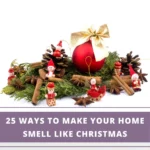As an Amazon Associate I earn from qualifying purchases. See Full Disclosure Here
An essential oil diffuser is one of the key tools you can use to get the benefits of aromatherapy. And yes, it may also be called an aromatherapy diffuser – both refer to the same thing.
Before we dive into what are essential oil diffusers and discuss how they work, it may help to understand a few underlying principles of aromatherapy. If you’re new to aromatherapy and essential oils, start here:
What Is Aromatherapy? How Does It Work?
What Are Essential Oils? How Do They Work
How To Use Essential Oils For Aromatherapy
What Is An Essential Oil Diffuser? How Does It Work?
An essential oil diffuser is a device that’s specifically designed to disperse essential oil molecules into the air slowly and steadily so you can enjoy the aroma and the therapeutic properties of the oil.
There are different types of essential oil diffusers. Each type works using a different mechanism. Here’s a detailed discussion of the types of essential oil diffusers, how each one works, and the pros and cons of each.
For now, this is a snapshot of the four main types of diffusers:
1. Ultrasonic Diffusers
Ultrasonic diffusers are popular for their versatility, ease of use, and affordability. These devices use ultrasonic vibrations to disperse a mixture of water and essential oils into the air as a cool mist. They often come with adjustable timers, LED lights, and other features that allow you to personalize your aromatherapy experience.
2. Nebulizing Diffusers
Nebulizing diffusers are known for their powerful and direct dispersion of essential oils. They use pressurized air to break down the oil into micro-particles and disperse them into the air as a concentrated mist. These devices don’t use water so you get the undiluted aroma and therapeutic benefits of the essential oil that’s being diffused. Nebulizers are ideal for large spaces and therapeutic use.
3. Passive Diffusers
Passive diffusers work by absorbing essential oils and then evaporating the vapors slowly and steadily without the aid of any outside mechanism. These diffusers typically have a pad or a filter where the oil is applied or the device itself is made from some absorbent material such as terracotta, ceramic, or sandstone. Passive diffusers are simple to use and suitable for smaller spaces.
4. Heat Diffusers
Heat diffusers use gentle heat to release the aroma of essential oils into the air. They often feature a dish or tray where the oil is placed, and a heat source underneath that gently warms the oil, causing it to evaporate. These are the least effective as heat damages some of the therapeutic properties of essential oils.
How To Choose the Right Diffuser for Your Needs
When selecting an essential oil diffuser, consider factors such as room size, desired features, budget, and personal preferences.
Ultrasonic diffusers are versatile, beginner-friendly, and available in a wide range of prices, starting from as low as $15. Top-rated ultrasonic diffusers that cost less than $25.
Nebulizing diffusers provide stronger therapeutic effects and are the most effective of all essential oil diffusers but they are also the most expensive.
Evaporative diffusers and heat diffusers are more straightforward low-cost options.
It’s important to buy a diffuser that aligns with your specific needs and preferences. If you’re confused by all the options to choose from, this ultimate guide to buying an essential oil diffuser may help.
Consider the size of the room and the desired diffusion range when buying an essential oil diffuser. When diffusing in a large room, you must use an essential oil diffuser that’s designed for large spaces. Large-room diffusers have a wider ‘throw’ range and will disperse the scent over a larger area.
This ultimate guide to buying a diffuser for essential oils is a must-read if you’re not sure what to look for.
How to Use an Essential Oil Diffuser
Learning how to use an essential oil diffuser the right way is key to getting the benefits without any untoward incidents.
1. Before using your diffuser, read the manufacturer’s instructions carefully as each device has its own unique components and features.
2. Choose a suitable location: Place your diffuser on a stable, flat surface at least two feet above the floor to ensure optimal distribution of the mist. It’s a good idea to place the device on a water-proof table mat so any water vapor that condenses doesn’t ruin your table.
3. Add water to the diffuser’s tank, being careful not to exceed the maximum fill line.
4. Add a few drops of your chosen essential oil or blend to the water in the diffuser. The amount of oil needed will depend on the size of the diffuser and your desired scent intensity. 3-10 drops of essential oil per 100ml of water is a good starting point.
5. Diffusers have varying settings and controls. Familiarize yourself with the options available, such as timer settings, mist intensity, and LED light settings. Adjust these settings to find the perfect combination for your needs
6. Plug the diffuser into a power outlet and switch it on to begin diffusing your chosen essential oils.
Additional Tips for Using Your Diffuser
When using essential oils for the first time, start with a few number of drops, especially if you are sensitive to strong scents or unsure of a particular oil. You can always adjust the amount based on your preferences and the size of the room.
Experiment with essential oil blends. Create your own unique blends by combining different essential oils. Experiment with scents that complement and enhance each other. Begin with simple combinations and gradually explore more complex blends to discover your favorites. Alternatively, look for blends that are formulated for different benefits.
Take into account the size of the room when selecting the amount of essential oils to use and the type of diffuser. Larger spaces may require more drops or a stronger diffuser to achieve the desired aroma.
Everyone has unique preferences when it comes to scents and aromas. Observe how different oils and blends make you feel and adjust the number of drops or combinations accordingly. Aromatherapy is a personal experience, so find what works best for you.
Cleaning and Maintaining Your Aromatherapy Diffuser
It’s important to clean your diffuser regularly to prevent the buildup of bacteria, mold, or mineral deposits that could affect the performance and safety of your diffuser.
Follow these simple steps to keep your diffuser in top condition:
1. Unplug the diffuser and remove any remaining water from the tank.
2. Wipe the tank clean with a damp cloth and mild soap, avoiding harsh chemicals that could damage the diffuser.
3. If your diffuser has a mister or ultrasonic plate, gently clean this component with a cotton swab dipped in rubbing alcohol or diffuser cleaner.
4. Rinse and dry all components thoroughly before reassembling and using your diffuser again.
Safety Considerations When Using A Diffuser
While aromatherapy diffusers offer numerous benefits, it’s important to be aware of potential safety concerns and precautions.
Keep your diffuser out of reach of children and pets at all times to prevent accidental over-exposure or ingestion.
Always follow safety guidelines when using essential oils. Some oils may not be suitable for children, pets, or certain medical conditions.
If you have any concerns or specific health conditions, consult a qualified aromatherapist or healthcare professional.
Additional reading: Cautions & concerns when using essential oils
Benefits of Using an Essential Oil Diffuser
Promotes Relaxation and Stress Relief. Many essential oils have calming properties that can help reduce stress, anxiety, and promote relaxation. Diffusing oils like lavender, chamomile, and bergamot can create a soothing environment.
Supports Better Sleep. Certain essential oils, such as lavender and vetiver, are known for their sedative effects, promoting a more restful sleep. Diffusing these oils in the bedroom before bedtime can contribute to a peaceful sleep environment.
Enhances Mood and Focus. Citrus oils such as lemon and orange can uplift the mood and improve focus and concentration. Diffusing these oils in work or study areas can create an energizing and stimulating atmosphere.
Purifies the Air and Fights Odors. Some essential oils, such as tea tree and eucalyptus, have antimicrobial properties that can help purify the air by reducing airborne bacteria and mold. Diffusing these oils can help combat odors and create a fresher environment.
Boosts Immune System and Respiratory Health. Certain essential oils, including eucalyptus, peppermint, and tea tree, have expectorant and decongestant properties that can support respiratory health. Diffusing these oils when experiencing congestion or seasonal allergies can provide relief.
DO YOU REALLY NEED AN ESSENTIAL OIL DIFFUSER?
While using an aromatherapy diffuser is definitely one of the most effective and convenient ways to enjoy the benefits of the different essential oils, it is not absolutely essential.
There are several other ways to use essential oils without a diffuser.
You can apply a few drops of oil on a handkerchief, cotton ball or tissues and inhale the aromas whenever you want. This way of using essential oils is especially handy when you’re outdoors or traveling.
To use essential oils for sleep, put a few drops on your pillow cover just before you hit the bed. The gentle aromas will help you get a really good night’s sleep and also give you all of the benefits while you are sleeping.
Those are just two of 25 easy ways to use essential oils without a diffuser.
Customizing Your Own Blends To Add To Your Essential Oil Diffuser
Feel free to experiment with different essential oils to create your own unique blends.
Start with a base note, add middle and top notes, and adjust the number of drops according to your preferences. Learn how to blend essential oils and master the art of combining oils and aromas.
Some popular base notes include cedarwood and patchouli, middle notes include geranium and lavender, and top notes include lemon and peppermint.
Energizing Blend Recipe
3 drops peppermint oil
3 drops rosemary oil
2 drops lemon oil
Calming and Relaxing Blend Recipe
4 drops of lavender oil
3 drops of chamomile oil
2 drops of frankincense oil
Seasonal and Holiday Blends
3 drops of cinnamon oil
2 drops of orange oil
2 drops of clove oil
Immune-Boosting Blend Recipe
3 drops of eucalyptus oil
2 drops of tea tree oil
2 drops of lemon oil
By using an essential oil diffuser, you can experience the benefits of aromatherapy in the comfort of your own home. Whether you’re looking to unwind and relax, boost your mood, or improve well-being, understanding what are essential oil diffusers and the different types and how to use them properly will empower you to make the most of your aromatherapy journey.
Disclaimer: This information is not intended to serve as medical advice. Please consult your physician before using essential oils. See Full Disclaimer here.






